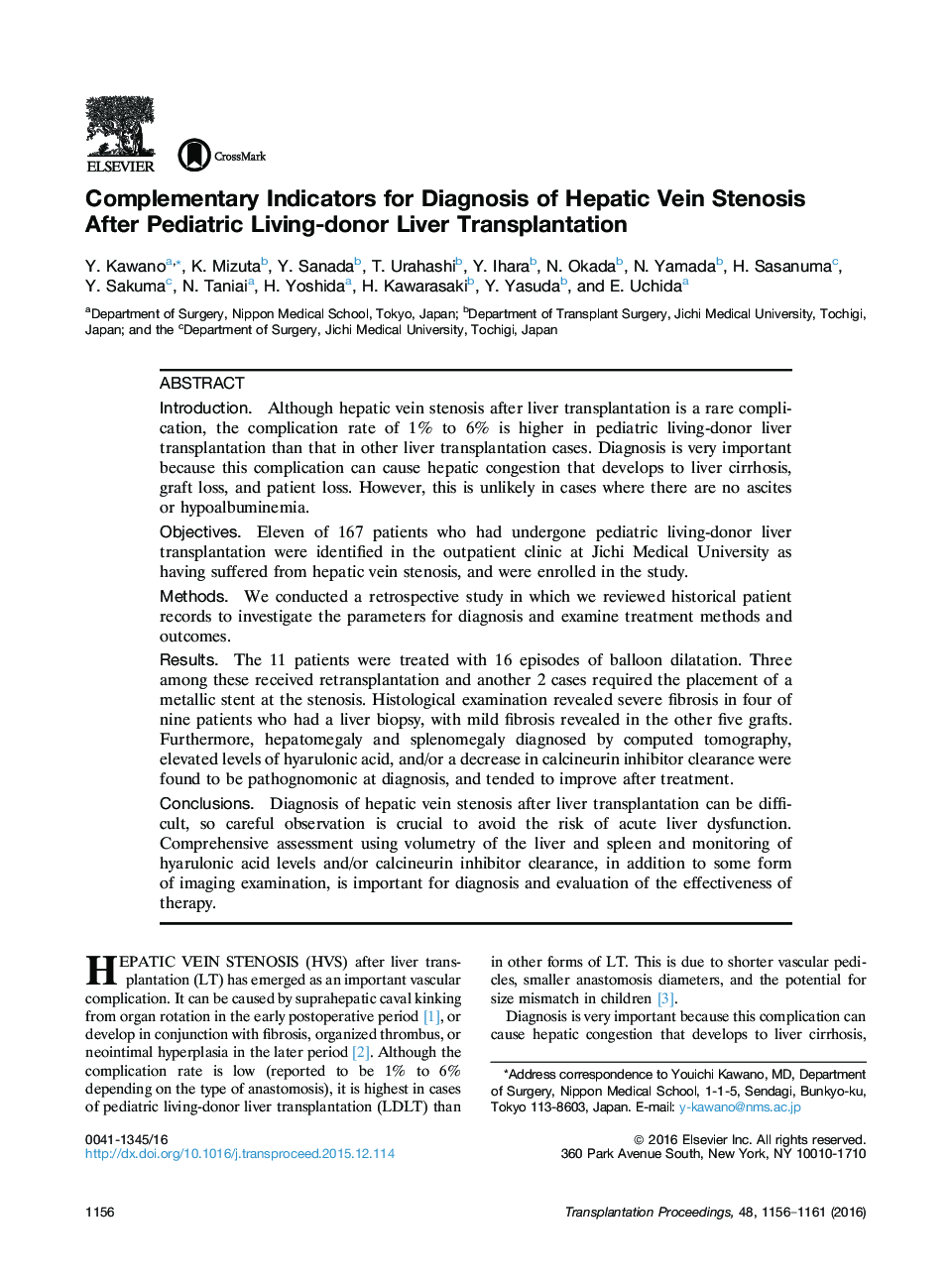| کد مقاله | کد نشریه | سال انتشار | مقاله انگلیسی | نسخه تمام متن |
|---|---|---|---|---|
| 4255980 | 1284506 | 2016 | 6 صفحه PDF | دانلود رایگان |
• We developed an algorithm based on Doppler ultrasound to determine hepatic vein stenosis (HVS) in the outpatient clinic.
• We can extract the complementary indicators for diagnosing HVS after pediatric living-donor liver transplantation.
• Comprehensive assessment using liver and spleen volumetry, hyarulonic acid values, and/or calcineurin inhibitor clearance ratios in addition to some form of imaging examination is important for diagnosis and evaluation of the treatment therapy.
IntroductionAlthough hepatic vein stenosis after liver transplantation is a rare complication, the complication rate of 1% to 6% is higher in pediatric living-donor liver transplantation than that in other liver transplantation cases. Diagnosis is very important because this complication can cause hepatic congestion that develops to liver cirrhosis, graft loss, and patient loss. However, this is unlikely in cases where there are no ascites or hypoalbuminemia.ObjectivesEleven of 167 patients who had undergone pediatric living-donor liver transplantation were identified in the outpatient clinic at Jichi Medical University as having suffered from hepatic vein stenosis, and were enrolled in the study.MethodsWe conducted a retrospective study in which we reviewed historical patient records to investigate the parameters for diagnosis and examine treatment methods and outcomes.ResultsThe 11 patients were treated with 16 episodes of balloon dilatation. Three among these received retransplantation and another 2 cases required the placement of a metallic stent at the stenosis. Histological examination revealed severe fibrosis in four of nine patients who had a liver biopsy, with mild fibrosis revealed in the other five grafts. Furthermore, hepatomegaly and splenomegaly diagnosed by computed tomography, elevated levels of hyarulonic acid, and/or a decrease in calcineurin inhibitor clearance were found to be pathognomonic at diagnosis, and tended to improve after treatment.ConclusionsDiagnosis of hepatic vein stenosis after liver transplantation can be difficult, so careful observation is crucial to avoid the risk of acute liver dysfunction. Comprehensive assessment using volumetry of the liver and spleen and monitoring of hyarulonic acid levels and/or calcineurin inhibitor clearance, in addition to some form of imaging examination, is important for diagnosis and evaluation of the effectiveness of therapy.
Journal: Transplantation Proceedings - Volume 48, Issue 4, May 2016, Pages 1156–1161
